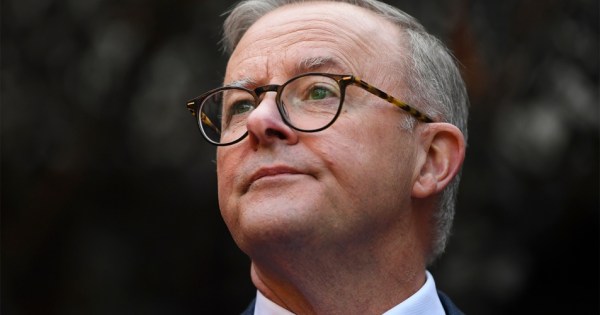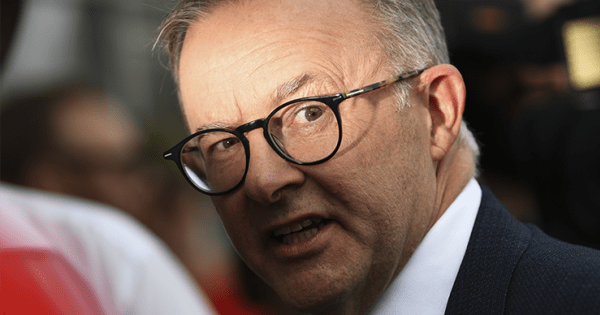
There’s a COVID-sized hole that has suddenly popped up in Australia’s journalism. One minute, news about the pandemic was everywhere. Next minute? It’s morphed into metaphorical fish-and-chips wrapping.
Where’s it gone? And what’s going to fill it?
Sure, there’s still the ongoing reporting about case numbers, vaccinations and health orders. But almost without us noticing, COVID-19 has slipped away as the dominant story shaping the journalism of our time as the country shakes off the past two years.
Australia’s media challenge is compounding. There’s no social consensus over how we should consider the past two years. A triumph of national unity? A harsh two years of social policing? A moment to be celebrated, resented — or just forgotten?
In the traditional media, editors and journalists are tip-toeing across the minefield of the country’s emotions as we transition to post-COVID times. In the “let’s not call it freedom day” reopening in Melbourne this past weekend, the reporting of Victorians coming out into the light was cautiously low-key.
The ABC, particularly its Melbourne-based reporters and presenters, responded by continuing with the corporation’s two-year-long “we’ve got this” enthusiasm. Nine, Seven and the News Corp tabloids nodded it off as a good-news story, something like the weather.
In The Australian it got darker, with Gideon Haigh spitting out “No gratitude, no pride, no relief … just quiet seething”. It’s a key piece for the moment, a reminder for political leaders that thanks are fleeting.
Two valuable political lessons have already emerged from the pandemic. Despite 40-odd years of neoliberalism, in crisis people turn to the government. And, perhaps more surprisingly, governments are — if later rather than sooner — able to read public grumblings to surrender the extraordinary powers they took on to manage the pandemic.
News media have had a more mixed pandemic. The early urgency to understand just what was going on boosted readership and subscriptions, hurrying national media on through the necessary shift to a reader-supported business model (and equally hurrying on the death of traditional local media).
Early media backing for public health lockdowns empowered governments to move quickly to suppress the virus. But the lure of a continuing catastrophism urged on the attractions of policing as a public health solution. And the media’s amplification of AstraZeneca concerns contributed to early vaccine hesitancy.
The media’s “who’s to blame?” storyline (from 2020’s bonking security guards through to 2021’s outdoor pub-crawlers) acted to transfer responsibility for the disease from governments’ long-term underfunding of public health to ordinary people “doing the wrong thing”.
Meanwhile state premiers reached over the media’s heads, talking directly to their audience through daily press conferences and social media.
Now, like political leaders, media organisations are struggling to grasp the public mood, with their uncertainty on show in the print front page and television news lead (which tell us what the publisher thinks is important for us to know) and the home page (more algorithmically driven to tell us what stories readers want to read).
It suggests there’s an enthusiasm to hurry to the post-COVID times where perhaps we can simply forget the lacuna of the past two years with a “well, that was then” shake-off.
No surprises there. It’s the same way society has always tended to deal with trauma. Big social events — wars and disease alike — tend to be tamped down until enough time has passed to blunt the sharp edges. Even the great Spanish Flu pandemic vanished from memory until COVID-19 came rhyming along a hundred years later.
That’s what’s determining the federal government’s pondering over election timing: go now, while people still remember their pandemic management, or wait until next year in the hope people have forgotten all about it.








We tend to watch the ABC news most nights over dinner. The format doesn’t vary – about ten minutes of what they decide is news, a couple of minutes of if finance reporting on week nights, between ten and fifteen minutes of sport and five minutes of weather.
Last night, for the third night in a row, they devoted five minutes of the news bulleting to coverage of an industrial accident on a film set in the US. There was a bit of local pandemic coverage and more footage of National Party MPs walking through some doors while the voice over described how they couldn’t agree on net zero for 2050 but they had nearly finished writing up their list of ransom demands. Oh, and they also had a quaint foreign colour piece on South Korean tattoo laws. That was the news for Sunday, October 24th. Here is a short list of stories they might have covered but didn’t consider them of sufficient importance, (I’m sure other Crikey readers have their own similar lists):
Thanks Griselda. Its depressing isn’t it that our supposed news channel is also mostly dross! They did also cover the level crossing safety issue though (I think) which IS important.
Your so correct Griselda, all media are choosing the easy and economical (free) way to present the news (and I choose that term loosely!). Days late news bulletin items and a lack of incisive analysis stems from laziness and I suggest restrictive budgets. Borrowed stories/articles from international sources. I’d like to hear and read up to the minute stories on Lebanon, Russia, Eritrea, and all points of the globe instead of the usual pages and minutes devoted to the local pandemic. What will the media print when this virus is contained?
More propaganda for the LNP??
You clearly watch an ABC bulletin in another state from me, apparently the state of Exaggeration. The chances of the Baldwin story running five minutes seems unlikely, ten to fifteen minutes of sport would be unbelievable and the weather around here gets 2 minutes if we’re lucky.
On the other hand your extremely Worthy list of alternative stories might rather have been expected on SBS – once. If you took dinner half an hour earlier, you might have wondered why it even includes the word “World” in its news bulletin title, since it is mostly state-by-state Covid stories these days. Oh yes, plus Nationals MPs (and any other varieties) walking in and out of doors.
Not my experience of SBS news. How many minutes did state Covid news take?
Another ideological issue coursing in the background, especially the Anglosphere including UK and US, media first avoiding seriousness of the ‘science’ round Covid, employing negative PR to avoid constraints whether vaccines, vaccinations and restrictions, now ad nauseum citing ‘freedom’ (while egregiously ignoring best practice elsewhere inc. retention of masking).
As DeSmog UK found, this was not only being promoted by the same entities e.g. think tanks, but followed the same modus operandi, of climate science denial and delay.
Further, there also seems to be a need to reinforce libertarian ideology, have governments fearful of taking control e.g clear concrete plans and locally, the LNP and media continued focusing upon not just local ‘freedom’ but (closed) ‘borders’ reinforcing existential nativism and sense of other.
SBS does the best actual News coverage. Especially in relation to International stories.
The Main Stream Media TV News is very light on. A couple of headline pieces, and a lot of fluff.
Sky News, especially the After Dark programs are mainly Partisan Opinion pieces.
The Daily Newspapers contain a lot of exaggeration and sensationalist articles, and this has become as bad as a lot of social media that has turned into a cesspool of negativity, creating strong divisions in society.
The Murdoch papers especially, drive the divisions with relentless criticism of anything that the Labor Premiers do, and fawning over anything the Coalition Premiers and our Prime Minister does.
What is this ‘post-COVID’ times business??? COVID is going nowhere.
Look at the UK post ‘freedom day’…
The media’s reporting reflects the corporate interests of its owners which is to lull us into thinking ‘let it rip’ is fine..